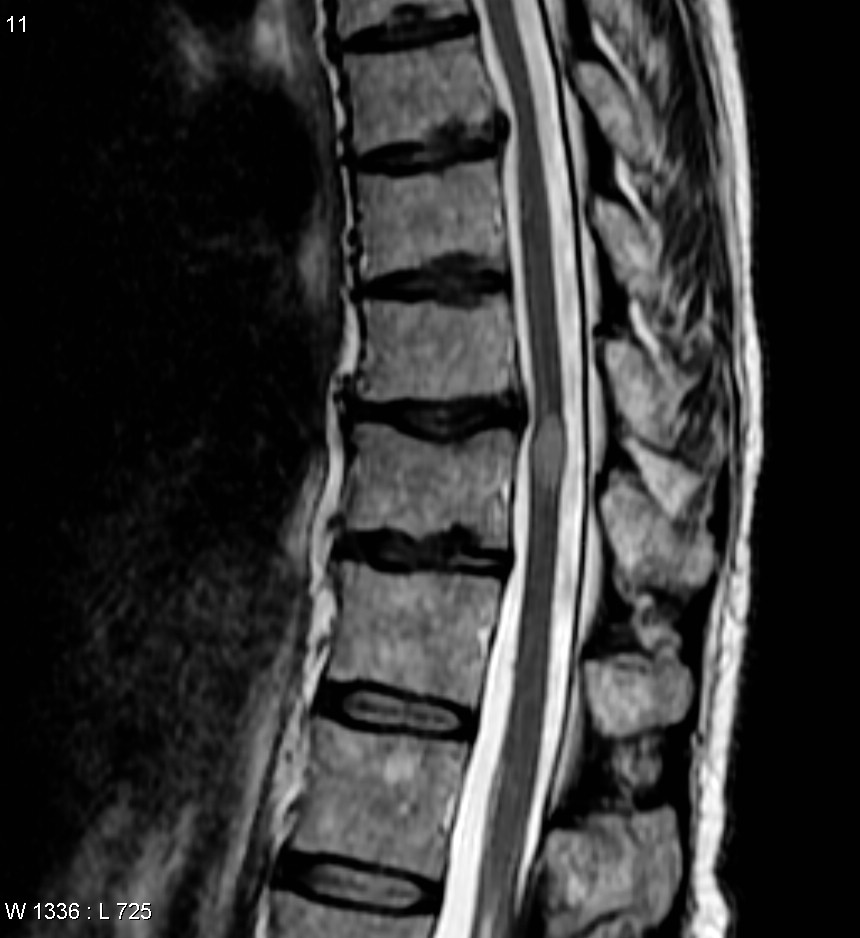Acute Transverse Myelitis

A rare inflammatory demyelinating disorder of the spinal cord that can be either idiopathic (IATM) or secondary to a known cause (SATM).
Epidemiology
Annual incidence of IATM is estimated between 1/1,000,000 and 1/250,000. Incidence of SATM is variable and depends of the underlying disease.
Clinical description
Age of onset and clinical course vary depending on the form. The clinical manifestations common to both forms include motor involvement (limb weakness, stiffness and muscle spasms with impaired respiratory function in cases with involvement of the upper spinal cord), sensory manifestations (back pain, paresthesia, numbness and neuropathic pain) and autonomic findings (sexual dysfunction, urinary urge/retention, bowel urge/retention and autonomic dysreflexia). Other signs depend on the associated diseases in SATM, with involvement of cranial and peripheral nerves. IATM has a monophasic course whereas SATM may be relapsing.
Etiology
IATM is believed to be an immune-mediated disease, due to a late immune response against a recent infection that inadvertently targets the spinal cord. SATM is due to an inflammatory disease: multiple sclerosis (MS), neuromyelitis optica (NMO), systemic lupus erythematosus (SLE) and Sjögren's syndrome (see these terms), and may also be due to an infectious disease (bacterial, parasitic or viral).
Diagnostic methods
Diagnosis requires MRI of the spinal cord to confirm the presence of Acute transverse myelitis and cause, if any. Laboratory tests are also essential for identifying the cause of SATM: analysis of the cerebrospinal fluid may reveal the presence of oligoclonal bands (commonly seen in MS) or bacterial/viral/parasitic infections; serology may reveal the presence of autoantibodies to aquaporin-4 (NMO), anti-double-stranded DNA antibodies (SLE) or anti-Ro/SS-A antibodies (Sjögren's syndrome).
Differential diagnosis
The differential diagnosis includes acute transverse myelopathy associated with fistulae, trauma, acute compressive lesions (such as metastases and epidural abscess) and infarction of the spinal cord.
Management and treatment
Treatment approaches depend on the presence of an associated disease. Acute treatment may include corticosteroids and plasma exchange in steroid-resistant patients. The benefit of intravenous immunoglobulins and cyclophosphamide remains to be established. Long-term care includes symptomatic management, rehabilitative therapy, and, in case of SATM, long-term maintenance treatment to prevent relapses or disease progression.
Prognosis
The prognosis is variable, unpredictable and depends on the response to treatment. SATM is often relapsing and prognosis depends on prevention of further episodes.